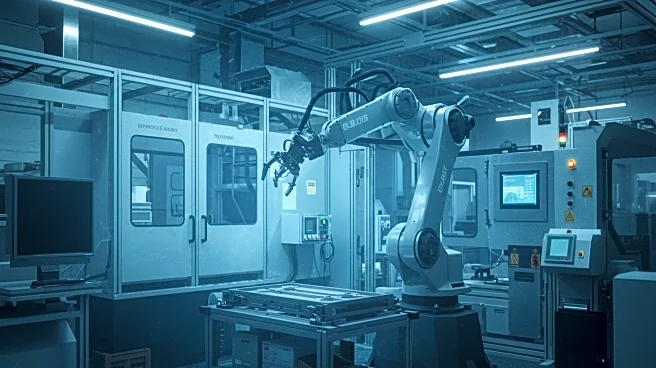What's Happening?
U.S. businesses are facing significant challenges due to increasing tariffs on Chinese imports, with some products experiencing tariffs as high as 60%. This situation is prompting companies to seek technological solutions to manage costs without passing them onto consumers. Businesses are exploring nearshoring and reshoring options, moving operations to countries like Cambodia, Malaysia, Thailand, Vietnam, India, Mexico, and Canada. However, these moves do not guarantee savings, as costs can remain high, particularly for industries reliant on tariffed goods like steel. Companies are increasingly relying on technology, such as AI-enabled cloud innovations and adaptive supply chain solutions, to maintain inventory and order accuracy while cutting fulfillment costs.
Why It's Important?
The rising tariffs are reshaping global supply chains, forcing U.S. companies to adapt strategically to remain competitive. The use of technology in supply chain management is becoming crucial for businesses to offset costs and find new revenue opportunities. This shift could lead to increased investment in technological solutions and a reevaluation of supplier networks. Companies that successfully navigate these challenges may emerge stronger, while those that fail to adapt could face financial difficulties. The situation highlights the importance of proactive strategies in managing trade disruptions and maintaining quality control across diverse locations.
What's Next?
Businesses are likely to continue exploring technological solutions and diversifying their manufacturing across multiple regions to mitigate the impact of tariffs. Companies may engage in discussions with retail partners about cost-sharing strategies and assess new suppliers to ensure quality. The ongoing trade tensions could lead to further adjustments in global supply chains, with companies seeking to lock in prices early and strategically manage their operations to withstand future disruptions.
Beyond the Headlines
The tariffs are not just a temporary hurdle but are fundamentally reshaping global supply chains. The quality of Chinese manufacturing has surpassed many alternatives, creating a dilemma for companies choosing between paying tariffs for superior quality or accepting lower quality to save costs. Continuous re-sourcing and reassessment of supplier networks are becoming the new normal, with companies needing to understand infrastructure gaps and maintain quality control across diverse locations.












